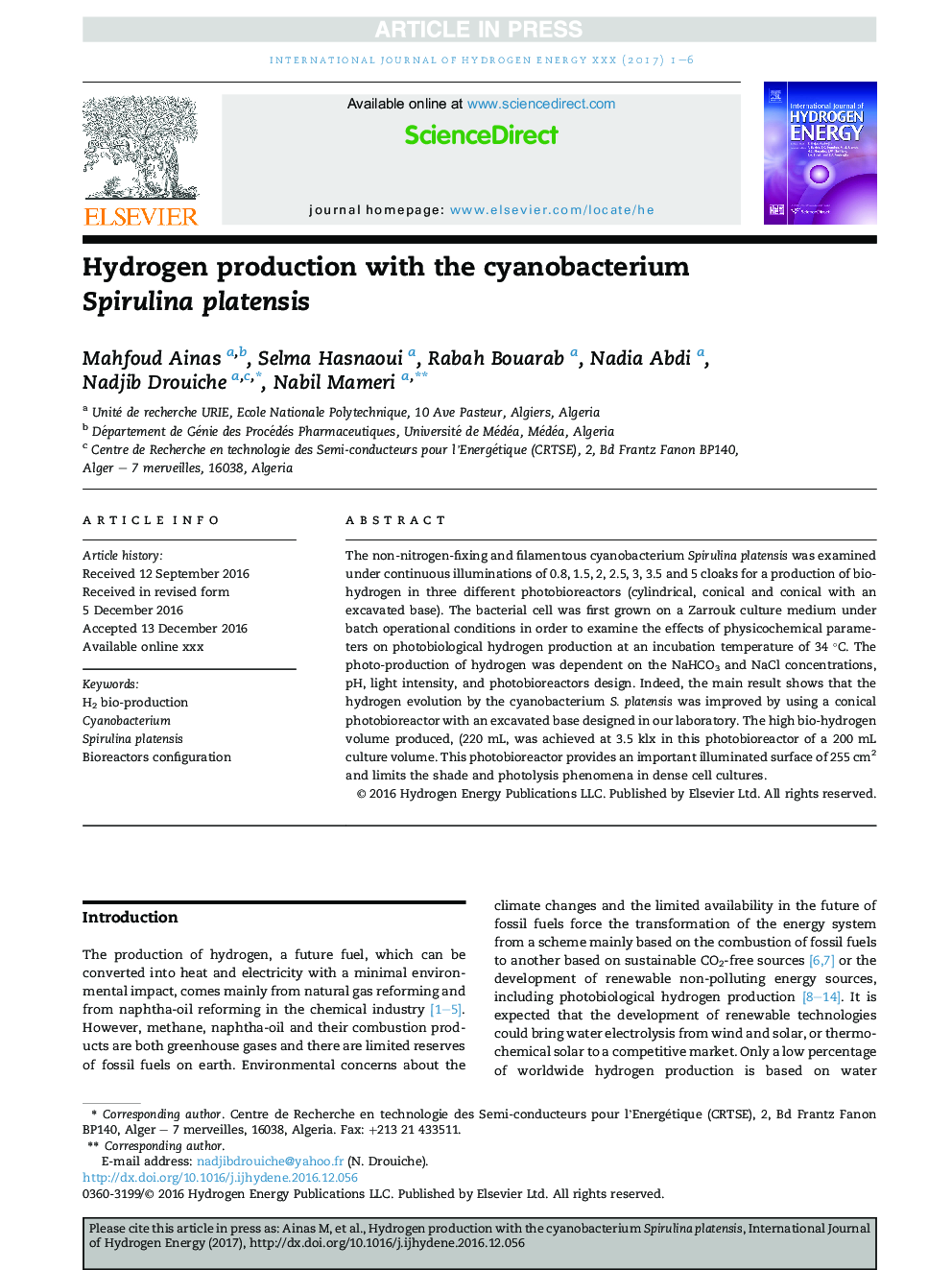| Article ID | Journal | Published Year | Pages | File Type |
|---|---|---|---|---|
| 5148365 | International Journal of Hydrogen Energy | 2017 | 6 Pages |
Abstract
The non-nitrogen-fixing and filamentous cyanobacterium Spirulina platensis was examined under continuous illuminations of 0.8, 1.5, 2, 2.5, 3, 3.5 and 5 cloaks for a production of bio-hydrogen in three different photobioreactors (cylindrical, conical and conical with an excavated base). The bacterial cell was first grown on a Zarrouk culture medium under batch operational conditions in order to examine the effects of physicochemical parameters on photobiological hydrogen production at an incubation temperature of 34 °C. The photo-production of hydrogen was dependent on the NaHCO3 and NaCl concentrations, pH, light intensity, and photobioreactors design. Indeed, the main result shows that the hydrogen evolution by the cyanobacterium S. platensis was improved by using a conical photobioreactor with an excavated base designed in our laboratory. The high bio-hydrogen volume produced, (220 mL, was achieved at 3.5 klx in this photobioreactor of a 200 mL culture volume. This photobioreactor provides an important illuminated surface of 255 cm2 and limits the shade and photolysis phenomena in dense cell cultures.
Keywords
Related Topics
Physical Sciences and Engineering
Chemistry
Electrochemistry
Authors
Mahfoud Ainas, Selma Hasnaoui, Rabah Bouarab, Nadia Abdi, Nadjib Drouiche, Nabil Mameri,
